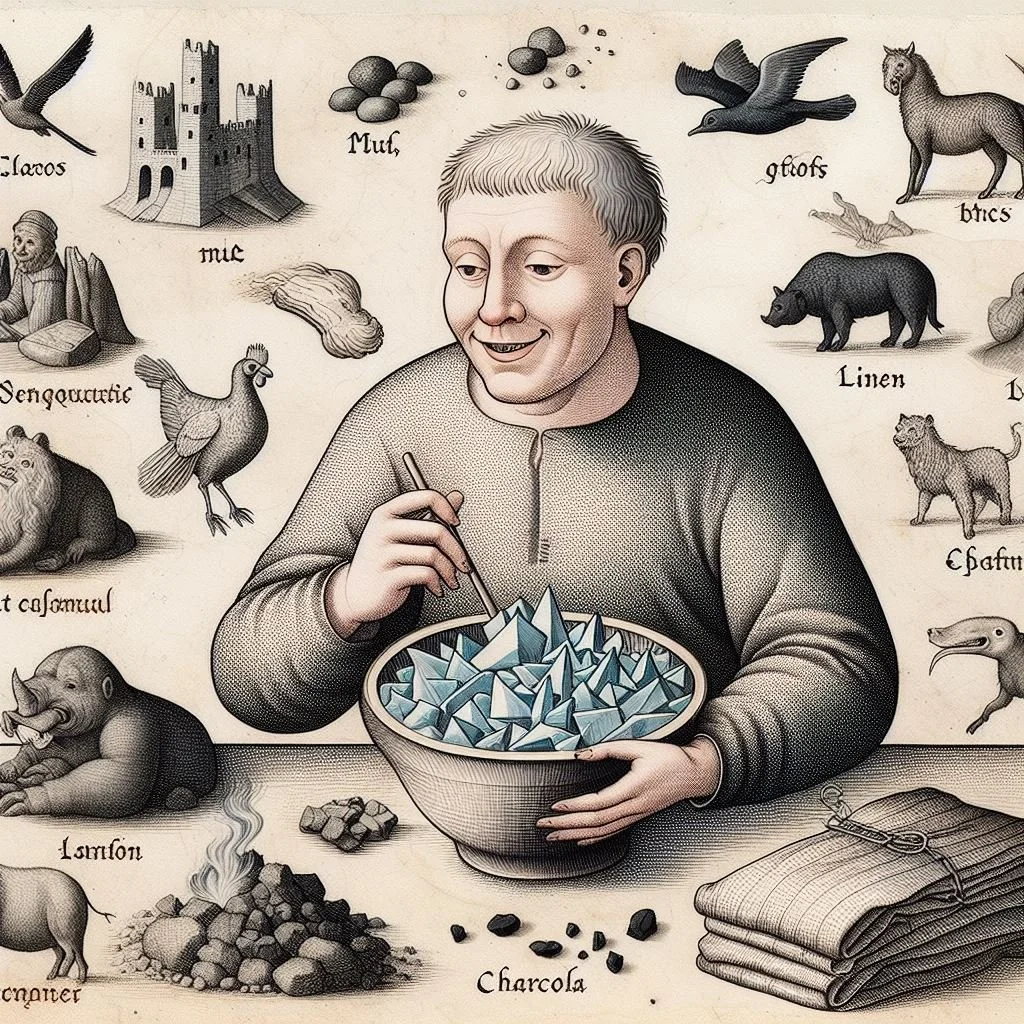Lazaro the glass-eater
Lazaro created through prompts on Bing Dalle.
When an anatomist dissected the man who could eat anything, what anatomical mysteries did he find?
Realdo Colombo was an Italian professor of anatomy and a surgeon at the University of Padua between 1544 and 1559. He published a book On Things Anatomical in 1559 which included a section called “Those things rarely found in anatomy”.
This chapter includes unusual anatomy he had seen during his 18 year career as an anatomist.
He writes of people born with six fingers, hermaphrodites, horseshoe-shaped kidneys, extra ribs and other anatomical anomalies.
But the most incredible story is that of a Venetian man named ‘Lazaro the glass-eater’. In life the man was most unusual. In death he was found to have equally unusual skull anatomy.
As Realdo put it:
“. . . what caused me the greatest astonishment was inspections of Lazaro, commonly called the glass-eater, whom all the patricians of Venice, indeed all Venetians and all those of Ferrara, knew by sight.
While alive, Lazaro has had no sense of taste, no pleasure or displeasure in eating; he did not distinguish insipid, bitter, sweet, fatty, salty, acrid; he ate glass, stones, rocks, wood, live animals, coals, fish drawn still wriggling from the fishpond.
He ate mud, linen and wooden clothes, hay, straw, and in short whatever men or living things ate, whatever was offered him and he was told to eat he would devour for a price. Among others, Martini the spice dealer at the Sign of the Angel in Padua is a witness that he ate a little bag of charcoal which was offered to him, and the bag as well.
When Martini saw this he paid Lazaro what he had promised and warned him not to come by his spice shop any more since he feared lest the man eat the shop and its contents.
Therefore, when this monster of nature had to be dissected by me, I began, insofar as it was possible, to seek carefully the cause of such a thing, and I believe that with God’s guidance I discovered it in the special structure of that person. For the fourth pair of nerves, which in other men had been extended by nature for the sake of taste, in this Lazaro the glass-eater crept neither to the palate nor to the tongue but were reflected to the occiput.”
Occiput bone
The occiput is the back of the head. The green shadow is the occiput bone.
By Anatomography - en:Anatomography (setting page of this image), CC BY-SA 2.1 jp, https://commons.wikimedia.org/w/index.php?curid=24057247
Was it really the nerves in the skull anatomy ?
According to the anatomists Robert J Moes and C.D. O’Malley, writing in 1960, Realdo got it wrong in relation to the diagnosis. While they speculate the reason behind some of the other mysteries described, frustratingly, they don’t mention what was going on with Lazaro’s anatomy that meant he could eat anything and everything.
I will consult with anatomists and get back to you as to why. Unless someone knows?
Read Moes and O’Malley paper:
REALDO COLOMBO: " ON THOSE THINGS RARELY FOUND IN ANATOMY " An Annotated Translation From the "De Re Anatomica" (1559) by ROBERT J. MOES, C. D. O'MALLEY and published in Bulletin of the History of Medicine, Vol. 34, No. 6 (NOVEMBER-DECEMBER, 1960), pp. 508-528 (21 pages)
https://www.jstor.org/stable/44446691

